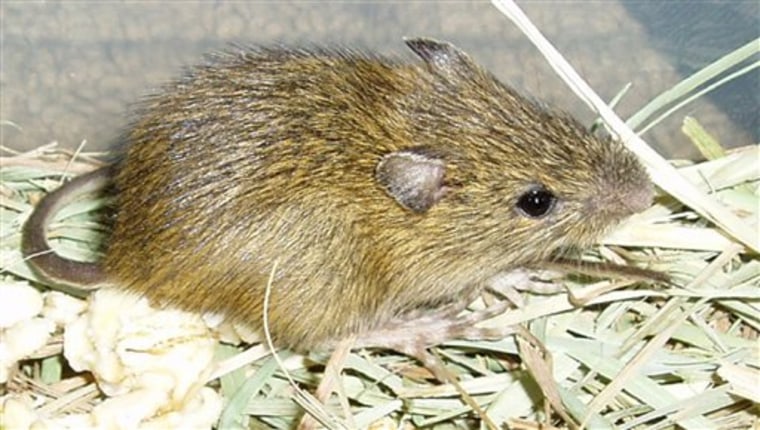A new study reinforces a rodent's reputation as the mouse that roared, and that could block millions of dollars in development in Wyoming and Colorado if it hangs on to its endangered status.
For the second time, a study has found the Preble's meadow jumping mouse is distinct from other types of mice and deserves federal protection.
The 3-inch-long mouse has been at the center of a huge controversy in the West because its habitat includes prime undeveloped real estate, and protected status would put limits on what the owners could do with their land.
The nocturnal, acrobatic mouse uses its 6-inch tail and strong hind legs to launch itself a foot and a half into the air. It can change directions in the air to nab an insect or spider.
Eighteen months ago the Interior Department announced it was withdrawing the Preble's endangered status based on a study that concluded it was actually a more common subspecies of jumping mouse. Developers cheered the decision, but after a chorus of complaints by other scientists and environmental groups, the decision was delayed and a new study was ordered.
Contractor's study questioned
That study, by Tim King of the U.S. Geological Survey, found that the original study, by Rob Roy Ramey of the Denver Museum of Nature and Science, was flawed.
Ramey no longer works at the museum and his home number was not known. The Interior Department, which hired him after he did the Preble study, was unable to provide a contact number for him Wednesday.
The latest report was published May 10 in Animal Conservation, the same magazine that had published Ramey's conclusion that the Preble's meadow mouse is the same subspecies as the Bear Lodge meadow mouse, which is not threatened.
For the latest report, eight scientists reviewed Ramey's study. They found that instead of showing that the two mice are the same subspecies, the research "offers further support for the classification of Zapus hudsonius preblei (Preble) as a unique subspecies and a distinct evolutionary unit worthy of the protection it is currently afforded."
"Our examination of the Ramey et al. study both demonstrates its limitations and reveals that their own results support the conclusion that the Preble's meadow jumping mouse is distinct and should remain protected under the Endangered Species Act,” said Sacha Vignieri, a biologist who specializes in mammalian population genetics for the Centre for the Study of Evolution at the University of Sussex in Great Britain.
August decision likely
Diane Katzenberger of the U.S. Fish and Wildlife Service said she had not seen the latest report and had no comment.
She said the agency still expects to make a decision by August on whether the Preble's mouse should remain protected.
The agency is hiring a contractor who will bring together a panel of experts "to help the Fish and Wildlife Service to understand the similarities and differences of the two bodies of work," she said.
The Preble has been listed as a threatened species since 1998. It hibernates from mid-October to early May, and also feeds on fungus, moss, willow, sunflower, grasses and seeds in riparian areas.
Its status blocks projects that would damage its habitat, estimated at 31,000 acres along streambanks stretching from Laramie, Wyo., to Colorado Springs.
